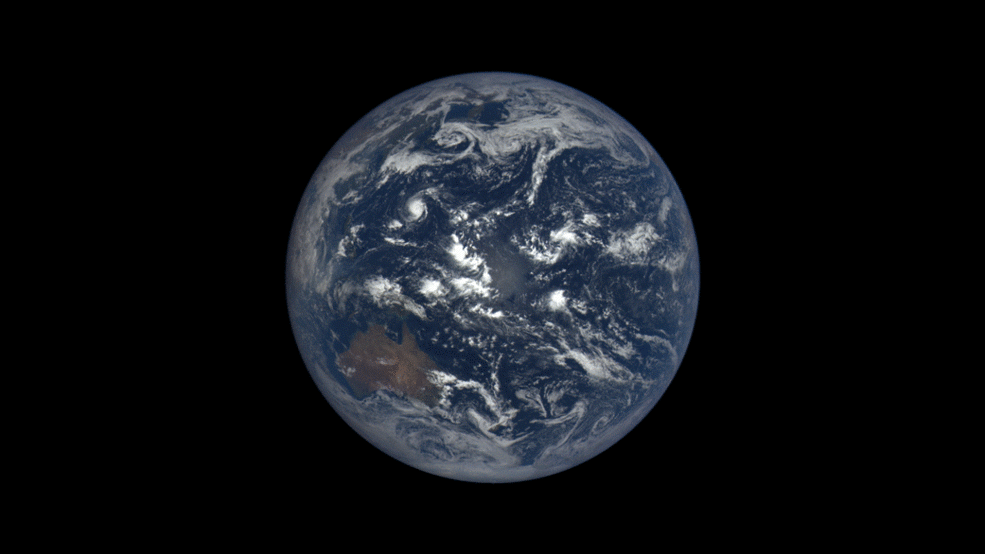
NASA launched a new website yesterday (October 20) where you can see images of the full, sunlit side of the Earth every day.
The images are taken by a NASA camera one million miles away on the Deep Space Climate Observatory (DSCOVR).
Visit EPIC daily images website
Once a day NASA will post at least a dozen new color images of Earth acquired from 12 to 36 hours earlier by NASA’s Earth Polychromatic Imaging Camera (EPIC). Each daily sequence of images will show the Earth as it rotates, thus revealing the whole globe over the course of a day. The new website also features an archive of EPIC images searchable by date and continent.
EPIC’s images of Earth allow scientists to study daily variations over the entire globe in such features as vegetation, ozone, aerosols, and cloud height and reflectivity.
EPIC is a four megapixel CCD camera and telescope. The color Earth images are created by combining three separate single-color images to create a photographic-quality image equivalent to a 12-megapixel camera. The camera takes a series of 10 images using different narrowband filters — from ultraviolet to near infrared — to produce a variety of science products. The red, green and blue channel images are used to create the color images. Each image is about 3 megabytes in size.
Since Earth is extremely bright in the darkness of space, EPIC has to take very short exposure images (20-100 milliseconds). The much fainter stars are not visible in the background as a result of the short exposure times.
The DSCOVR spacecraft orbits around the L1 Lagrange point directly between Earth and the sun. This orbit keeps the spacecraft near the L1 point and requires only occasional small maneuvers, but its orbit can vary from 4 to 15 degrees away from the sun-Earth line over several years.
Enjoying EarthSky? Sign up for our free daily newsletter today!
Bottom line: On October 20, 2015 NASA launched a new website with daily images of the full, sunlit side of the Earth. The images are taken by a NASA camera one million miles away on the Deep Space Climate Observatory (DSCOVR).











